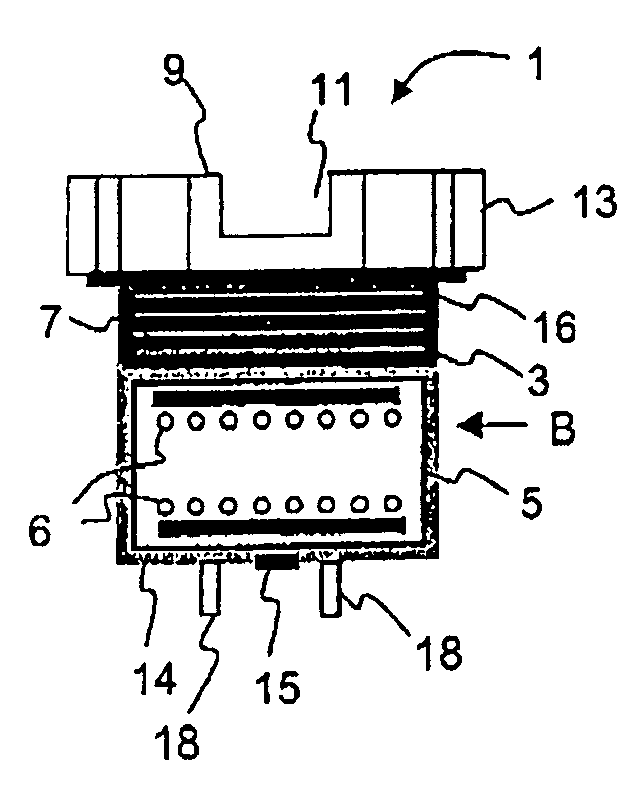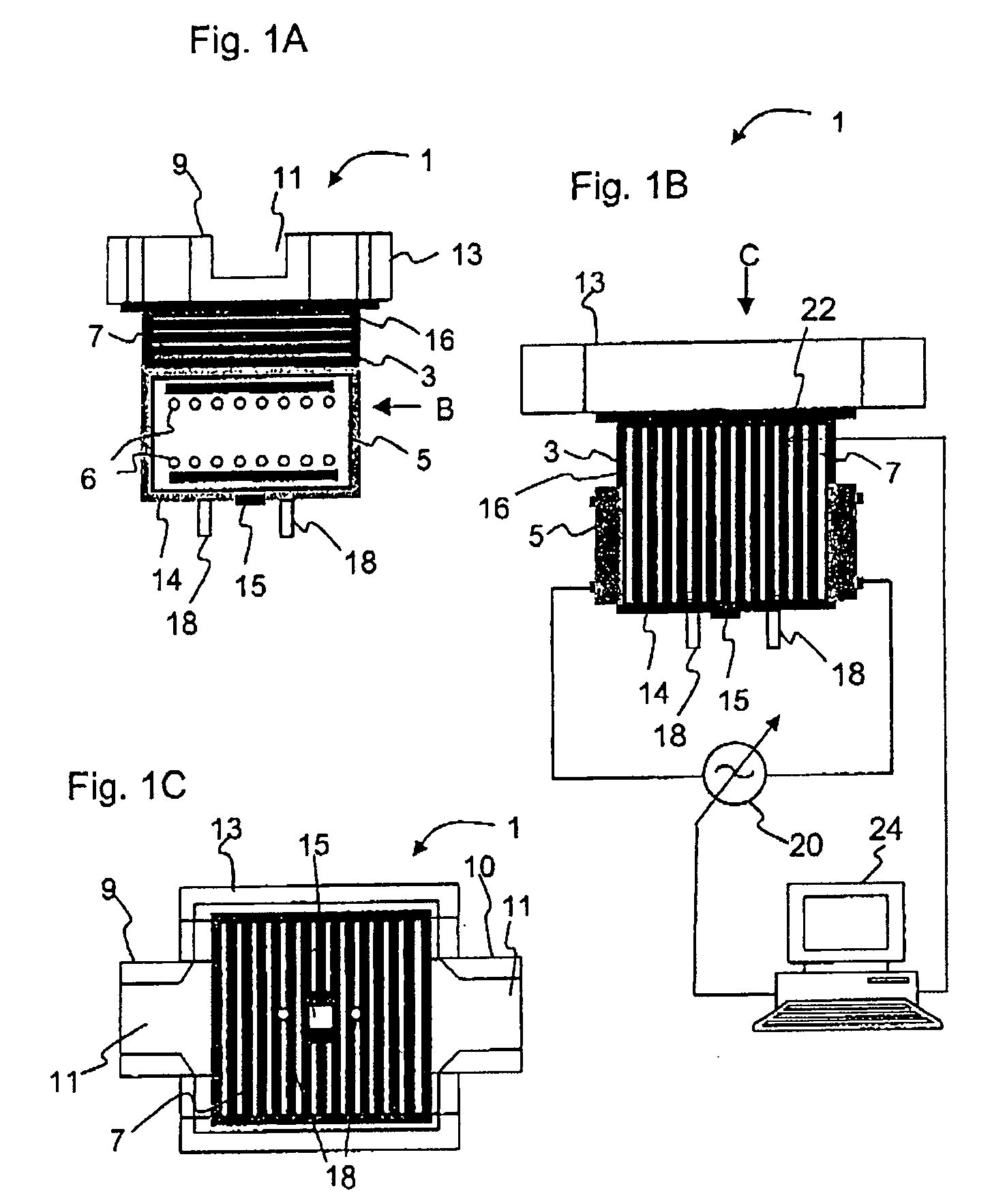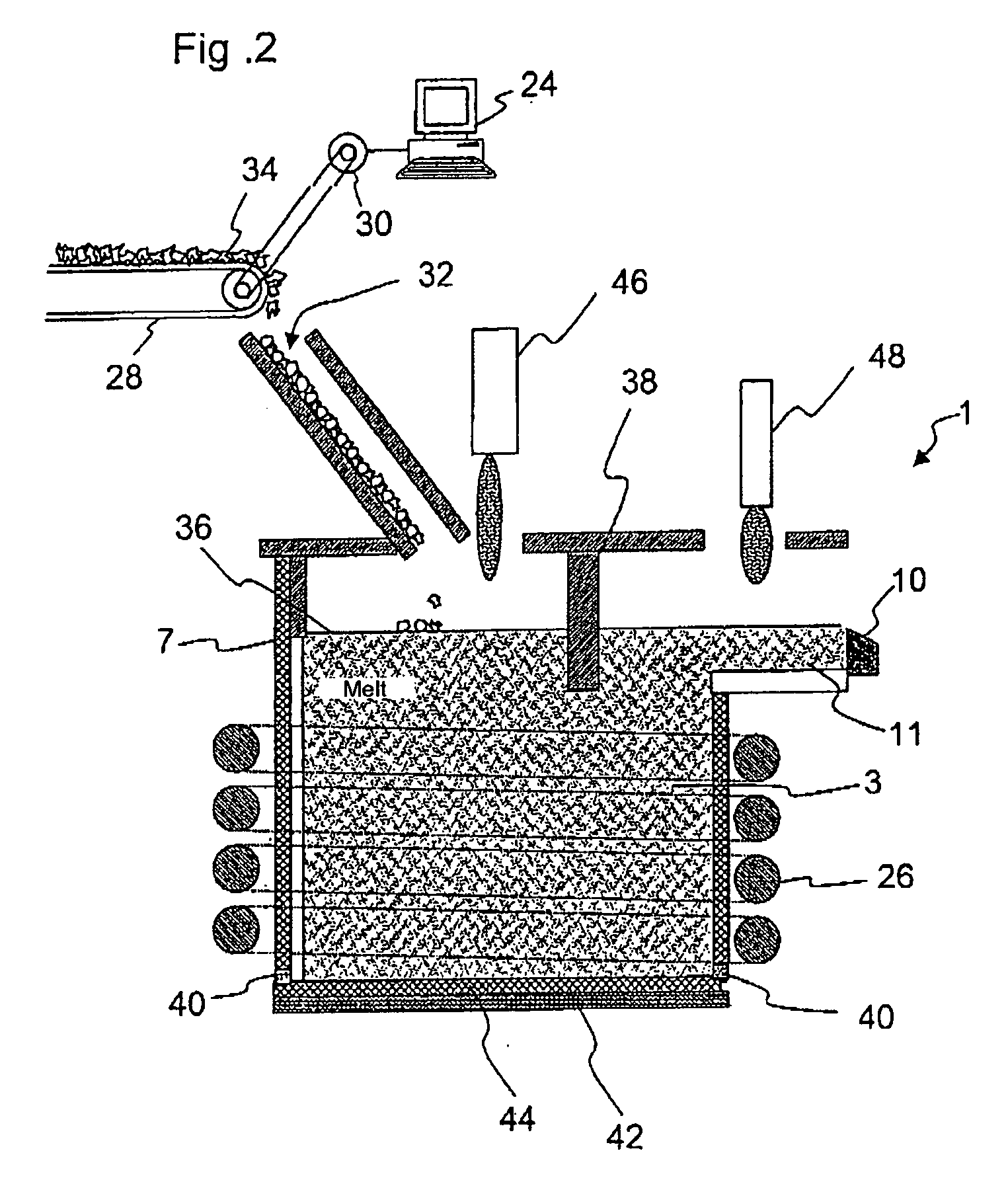Melting and refining in baths with cooled walls
a technology of refining and baths, which is applied in the direction of induction heating, induction heating control, furnace types, etc., can solve the problems of large amount of energy withdrawn from glass melt, increased energy loss through dissipation of heat, and increased difference, so as to achieve increased chemical reaction rate, increased melting rate, and high chemical reaction rate
- Summary
- Abstract
- Description
- Claims
- Application Information
AI Technical Summary
Benefits of technology
Problems solved by technology
Method used
Image
Examples
example 1
Energy Saving when Refining
[0207] The increase in the melting temperature both shifts the thermodynamic equilibrium and lowers the viscosity. The lowering of the viscosity leads to an increase in the rate at which the bubbles rise up and an increase in the diffusion rate of the gases in the melt.
[0208] By way of example, in the case of an Li2O—Al2O3—SiO2 glass-ceramic melt, it has been experimentally determined that increasing the temperature from 1 700° C. to 1 900° C. allows the throughput in a refining unit to be increased by at least a factor of 5 without any loss of quality.
[0209] The increase in temperature lowers the viscosity of the melt, and as a result increases the rate at which the bubbles rise up, by a factor of 5.
[0210] Furthermore, in the case of Redox refining, an O2 overpressure is built up in the event of a rapid increase in temperature in the melt, and this O2 overpressure is only gradually reduced again through the formation of bubbles and discharge of bubbl...
example 2
Test for Determining Teff
[0242] As has already been explained above, the energy consumption Etot, i.e. the sum of energy loss per unit weight EV through the walls and the base and the useful heat per unit weight EN for heating the melt, passes through a minimum at Teff, provided that the throughput is suitably adapted to the required residence time t.
[0243] The temperature Teff for the refining is estimated for a 700 liter skull crucible.
[0244] The calculation of the energy loss through the walls and the base as a function of the temperature is carried out with the aid of the diagram illustrated in FIG. 5.
[0245] The required residence time of the melt in the melting vessel or the increase in throughput as a function of temperature can be estimated in a first approximation on the basis of the increase in the rate at which the bubbles rise up. The rate at which the bubbles rise up v is calculated in accordance with the formula:
v=2 / 9*ρ*g*r2*1 / η
[0246] (V=rate at which the bubbles r...
example 3
Melting Down with a Constant Melt Volume
[0256] In a similar way to in the case of refining, the residence time of the melt in the melting unit when melting down batch can also be significantly reduced as the temperature rises, and consequently the throughput can be increased.
[0257] When melting down batch, Teff can once again be determined by means of the holding time t of the glass melt in the melting unit.
[0258] To determine the temperature dependency of the residence time t, FIG. 9 plots the Ln of the reaction rate k for the dissolution of SiO2 against 1 / T*1 000 (in degrees Kelvin, ° K.) of the melt. The activation energy for melting down the batch can be estimated from FIG. 9 since the SiO2 is among the slowest of the constituents of the batch of the material to be melted to dissolve. It can be seen from FIG. 9 that the dissolution rate of the batch increases exponentially with the temperature. The rate at which SiO2 melts increases by approximately a factor of 3 per 100 K. T...
PUM
| Property | Measurement | Unit |
|---|---|---|
| Temperature | aaaaa | aaaaa |
| Temperature | aaaaa | aaaaa |
| Melt temperature | aaaaa | aaaaa |
Abstract
Description
Claims
Application Information
 Login to View More
Login to View More - R&D
- Intellectual Property
- Life Sciences
- Materials
- Tech Scout
- Unparalleled Data Quality
- Higher Quality Content
- 60% Fewer Hallucinations
Browse by: Latest US Patents, China's latest patents, Technical Efficacy Thesaurus, Application Domain, Technology Topic, Popular Technical Reports.
© 2025 PatSnap. All rights reserved.Legal|Privacy policy|Modern Slavery Act Transparency Statement|Sitemap|About US| Contact US: help@patsnap.com



